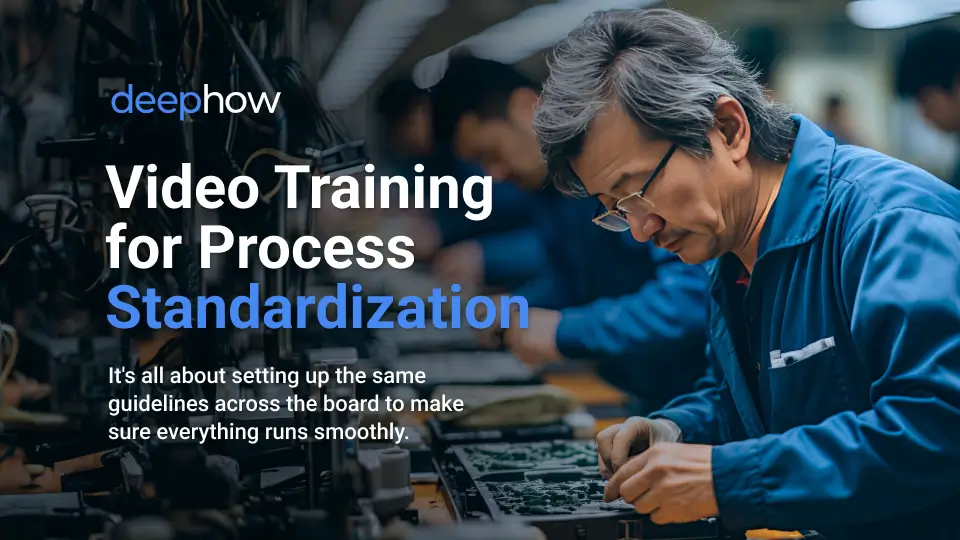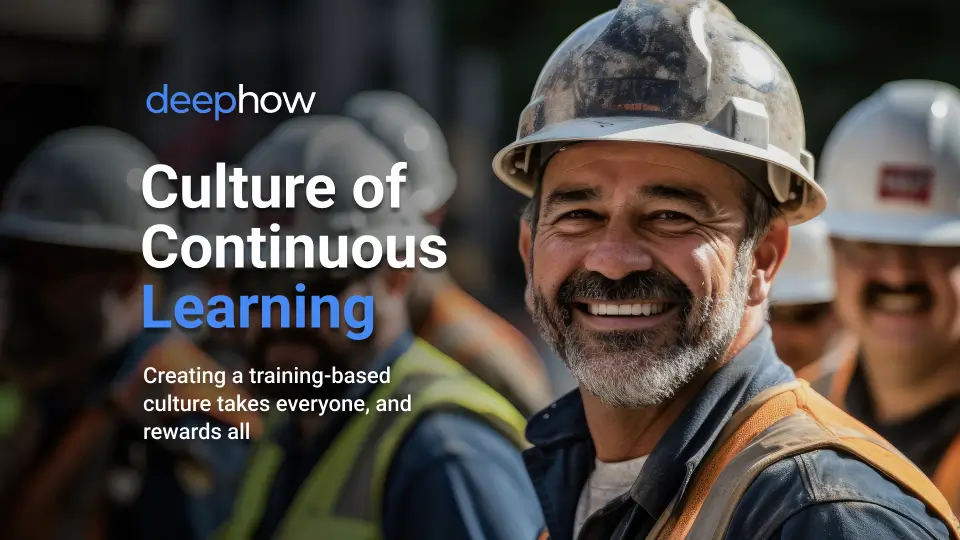
The legendary Thomas Edison once quipped, "I have not failed. I've just found 10,000 ways that won't work." With his penchant for creative problem-solving, it's a good thing he lived in an era of great invention. Otherwise, the Wizard of Menlo Park, who famously proposed to his second wife, Mina, in Morse code, might have found himself in dire need of a crash course in standardization! Picture the intricate gears of a well-oiled machine, such as those on Edison’s phonograph, each component calibrated to precision. This is the essence of process standardization.
Now, back to that proposal…
Edison is said to have taught Mina how to use Morse Code, enabling them to communicate discreetly, even in the presence of others. When he used the code to ask for her hand in marriage, she replied in code as well. What a shining example of standardization!
Today, with businesses operating on a global scale, employing teams of individuals, and facing complex challenges in every direction, standardization is not just a convenience but a necessity.
It's the backbone upon which efficient operations and scalable growth are built. Imagine a multinational trying to coordinate its operations across different continents without standardized processes and protocols—it would be chaos, much like Edison’s studio, and rightfully so.
Some of the most recognizable brands, including Anheuser-Busch, are among these large organizations with expansive global operations and high-growth trajectories. Despite their market dominance, they remain steadfast in their pursuit of innovation, continuously exploring ways to augment their products and services. A vital part of their journey is process standardization.

Why Organizations Need Process Standardization
Let's talk about standardization for a minute. It's all about setting up the same procedures, protocols, and guidelines across the board to make sure everything runs smoothly and tasks get done in a nice, organized way. Whether you're talking about making widgets in a factory or providing top-notch service in a fancy restaurant, standardization is key. Why? Well, it's like the magic ingredient that boosts productivity, makes sure quality stays top-notch, and keeps customers happy.
Here's why it's such a big deal:
- Enhanced Efficiency: By defining clear procedures and best practices, organizations can eliminate redundancies, minimize errors, and optimize resource utilization. Standardized processes enable employees to perform their duties more effectively, reducing the time and effort required to complete tasks. This efficiency not only improves operational performance but also enables businesses to meet deadlines, fulfill orders promptly, and respond swiftly to customer inquiries or demands.
- Consistency: When operations adhere to established protocols, they are more likely to deliver consistent outcomes. Whether producing goods or delivering services, customers expect a certain level of quality and reliability. Standardized processes ensure that products meet specifications and services meet predefined standards consistently. This consistency fosters trust and loyalty among customers, as they can rely on the organization to deliver consistent experiences time and again.
- Scalability: Standardization promotes scalability by providing a framework for growth. As businesses expand their operations, they encounter challenges related to managing complexity and maintaining quality. Standardized processes offer a blueprint for replication and expansion, allowing organizations to replicate successful strategies across different departments, locations, or markets. This scalability is essential for achieving sustainable growth without compromising quality or increasing operational costs disproportionately.
- Facilitating Innovation and Continuous Improvement: By establishing a baseline for operations, organizations can identify areas for optimization and innovation. Standardized processes provide a solid foundation for experimenting with new technologies, methodologies, or ideas (hello, Edison!), as they offer a clear reference point for evaluating performance. Furthermore, standardized data and metrics enable organizations to track progress, identify trends, and make data-driven decisions to drive continuous improvement initiatives.
- Compliance and Risk Management: Many industries are subject to regulatory requirements, quality standards, and safety protocols. Standardized processes ensure compliance with these requirements, reducing the risk of legal penalties, regulatory violations, or reputational damage. By adhering to established standards, organizations demonstrate their commitment to quality, safety, and ethical business practices, enhancing their credibility and trustworthiness in the eyes of stakeholders.

Standardizing is Challenging for Large Organizations
Achieving effective standardization requires commitment and collaboration across the organization. However, large organizations frequently encounter hurdles in standardizing processes due to various factors:
- Diverse Geographical Presence: Global organizations often operate in multiple countries with varying regulations, cultural norms, and business practices. This diversity can make it difficult to establish uniform processes that are effective across all locations.
- Organizational Complexity: Large organizations typically have complex structures with multiple departments, teams, and stakeholders. Coordinating efforts to standardize processes across these various entities can be time-consuming and resource-intensive.
- Legacy Systems and Practices: Over time, organizations may develop ingrained practices and systems that are resistant to change. Implementing standardized processes requires overcoming inertia and persuading stakeholders to adopt new ways of working.
- Communication Challenges: Ensuring consistent communication and understanding of standardized processes across different regions and departments can be challenging, especially when language and cultural barriers come into play.

This is where innovative solutions like DeepHow comes in with AI-powered video training. Large global organizations can overcome the challenges associated with standardizing processes and ensure that employees across all locations receive consistent and effective training.
- Scalability: AI-powered video training can be easily scaled across different regions and departments, allowing organizations to deliver standardized training materials to a large and diverse workforce.
- Personalization: AI can analyze employee performance data and tailor training content to individual needs and learning styles. This personalization ensures that employees receive relevant and engaging training materials that resonate with them. For example, with DeepHow, ISAIC (the Industrial Sewing and Innovation Center) implemented a more streamlined process by making training videos readily available and complementing them with detailed written instructions. This dual approach serves multiple purposes. Individuals who prefer visual learning can benefit from the videos, while those who prefer written materials or need a quick refresher can easily refer to the instructions.
- Accessibility: Video training can be accessed remotely, allowing employees to undergo training at their convenience, regardless of their location. This accessibility ensures that all employees have equal access to standardized training materials.
- Consistency: AI-powered video training ensures consistent delivery of training materials across different locations and departments, minimizing discrepancies in understanding and implementation of standardized processes.
- Analytics and Feedback: AI algorithms can track employee engagement and performance during video training sessions, providing valuable insights into areas for improvement. Organizations can use this data to refine and optimize their training programs continuously. At one Anheuser-Busch plant with DeepHow, four teams of 180 personnel working across three different round-the-clock shifts were educated up to proficiency without any interruption in production.

AI-Powered Video Training for Process Standardization
If Edison were alive today, can you imagine what he’d say about AI? Or AI-powered video training? Who needs Morse Code when you have ChatGPT?!
But in all seriousness, AI has emerged as a game-changer, particularly in the realm of training and knowledge dissemination. One of the most transformative applications of AI is in video training, which not only standardizes processes across large organizations but also harnesses in-house expertise for enhanced efficiency, knowledge preservation, and streamlined operations.
Large organizations possess a wealth of knowledge dispersed among their workforce, often untapped or underutilized. Through expert-led training sessions captured in video format, organizations can capture and preserve this invaluable knowledge for future generations.
Moreover, by involving subject-matter experts in the creation of training content, organizations foster a culture of knowledge sharing and collaboration. Knowledge preservation is essential, especially in industries where turnover rates are high or where specialized skills are critical for operations, such as manufacturing. AI-powered video training ensures that expertise is not lost when employees leave, retire, or transition to different roles. This continuity of knowledge safeguards against disruptions and minimizes the risk of errors or inconsistencies in processes.

DeepHow's extensive knowledge library is a valuable repository of video training materials, meticulously curated for easy access. Continuously expanding and evolving, it benefits from contributions by both experts and users. This dynamic platform facilitates the documentation of best practices, innovative techniques, and troubleshooting tips, empowering all members of the organization with collective intelligence.
Case in point: DeepHow's technology-enabled ISAIC to standardize their training processes, ensuring that every employee, regardless of their starting skill level or background, received the same comprehensive training. This standardization was crucial for maintaining a high level of operational excellence and consistency in production quality. One of the most notable achievements was a reduction of over 60% in the time required for onboarding and training new employees. This efficiency gains not only accelerated the process of integrating new team members into their roles but also ensured that training was consistent and of high quality across the board.
It’s clear that standardization is indispensable for driving efficiency, consistency, scalability, and innovation in business processes. By embracing standardization as a strategic imperative, large organizations can enhance their competitiveness, agility, and resilience in today's dynamic marketplace. AI-powered video training can facilitate these efforts. Incorporating AI-powered video training, like DeepHow, into organizational strategies not only streamlines processes but also empowers teams to adapt and thrive in an ever-evolving business landscape.
- .... .- -. -.- ... / ..-. --- .-. / .-. . .- -.. .. -. --. -.-.--
(“Thanks for reading!” in Morse code.)








